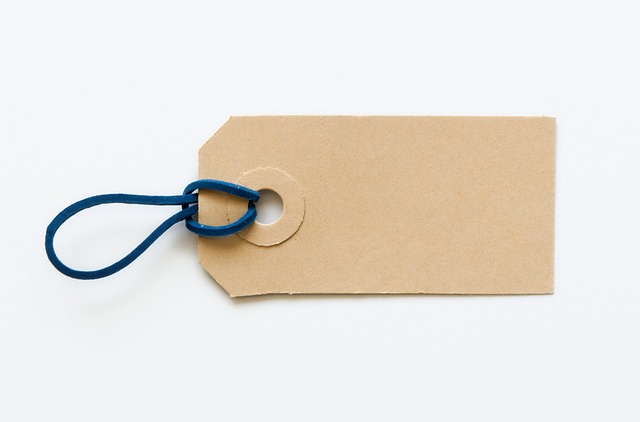Skin tags, caused by collagen buildup, can be removed safely and effectively in Bristol using liquid nitrogen treatments. This non-invasive method, known as cryosurgery, involves freezing and destroying skin tags with nitrogen, leaving minimal damage to surrounding skin. Aftercare is crucial for optimal results, including keeping the area clean, dry, and protected from sunlight. Complications are rare when performed by qualified professionals.
Looking to remove skin tags in Bristol? This comprehensive guide explores an effective method using liquid nitrogen. Skin tags, small, harmless growths, often appear on the neck, armpits, or hands. Understanding their causes and characteristics is key before considering removal. Liquid nitrogen, a cold cryo-therapy, offers a safe, non-invasive procedure with minimal downtime. Learn the step-by-step process for optimal results and discover post-treatment care tips to ensure effectiveness.
- Understanding Skin Tags: Causes and Characteristics
- Liquid Nitrogen as a Skin Tag Removal Method
- The Procedure: Step-by-Step Guide for Safety and Effectiveness
- Post-Treatment Care and Recovery Tips for Optimal Results
Understanding Skin Tags: Causes and Characteristics
Skin tags, medically known as acrochordons, are small, soft skin growths that typically appear on areas where skin rubs against itself, such as the neck, armpits, or groin. They can vary in size from a few millimetres to a centimetre and often have a tag-like appearance, hence their name. Although they are generally harmless, some individuals may find them unsightly or uncomfortable.
The exact cause of skin tags is not fully understood, but it’s believed that they form when collagen, a protein that provides structural support to the skin, collects in a small area. This excess collagen forms a tag-like growth. They can be hereditary, and certain conditions like obesity, diabetes, or hormonal changes may also contribute to their development. In terms of Skin Tag Removal Bristol, many people opt for liquid nitrogen treatments, which freeze and destroy the skin tags, offering a safe and effective solution for those seeking to remove these benign lesions.
Liquid Nitrogen as a Skin Tag Removal Method
Liquid nitrogen is emerging as a popular and effective method for skin tag removal, including in Bristol. This technique involves applying liquid nitrogen to the skin tags, which freezes them, causing them to shrivel and eventually fall off. It’s a non-invasive procedure that offers several advantages over traditional methods like cutting or burning.
The process is relatively quick and usually painless, making it a preferred choice for many seeking Skin Tag Removal Bristol services. A trained professional will use a small cannula or needle to apply the liquid nitrogen directly onto the skin tags, ensuring precision and minimizing damage to surrounding skin. This method has high success rates and is particularly effective for treating small, multiple skin tags.
The Procedure: Step-by-Step Guide for Safety and Effectiveness
The procedure for removing skin tags with liquid nitrogen, also known as cryosurgery, is a relatively simple and effective method when performed by a qualified professional. It’s a safe and popular choice for Skin Tag Removal Bristol. Here’s a step-by-step guide:
1. Preparation: The area to be treated is cleaned and numbed with a topical anaesthetic cream. This helps to minimize discomfort during the procedure.
2. Application of Liquid Nitrogen: Using a small, precise applicator or a cotton swab dipped in liquid nitrogen, the skin tag is targeted. The liquid nitrogen is applied quickly and briefly to freeze the skin tag and its blood supply.
3. Freezing Process: The liquid nitrogen freezes the skin tag rapidly, causing it to turn white and become firm. This is the body’s signal that the area needs to defend itself, which leads to the formation of ice crystals around the tag.
4. Removals: After a brief pause to ensure complete freezing, the skin tag is carefully removed. The area is then bandaged to protect it as it heals.
5. Healing: Over the following days, the frozen skin tag will dry up and fall off. Minor redness or discomfort is normal, but serious complications are rare when the procedure is performed by a trained professional.
Post-Treatment Care and Recovery Tips for Optimal Results
After your skin tag removal procedure with liquid nitrogen in Bristol, proper aftercare is crucial for optimal results and to prevent potential complications. Firstly, keep the treated area clean and dry. Avoid touching or scratching the spot, as this can introduce bacteria and lead to an infection. You can gently wash the area with warm water and a mild soap, then pat it dry with a clean towel.
During the healing process, you may experience some redness, swelling, and mild discomfort, which is normal. Applying a cold compress for 10-15 minutes several times a day can help reduce these symptoms. It’s important to avoid strenuous activities or exposure to extreme temperatures (very hot or very cold) for a few days after the treatment. Additionally, be mindful of your skin’s sensitivity; stay out of direct sunlight and use a broad-spectrum sunscreen when outdoors. If you notice any severe reactions, such as excessive redness, pus, or persistent pain, contact your Bristol skin tag removal specialist immediately.
Removing skin tags with liquid nitrogen offers a safe and effective solution for those seeking relief from these benign yet often unsightly growths. As one of the leading methods in the realm of Skin Tag Removal Bristol, this procedure ensures minimal discomfort and quick recovery times. With proper post-treatment care, individuals can bid farewell to unwanted skin tags and enjoy smoother, clearer complexions. Trusting a professional for this treatment is key to achieving optimal results and avoiding any potential complications.
